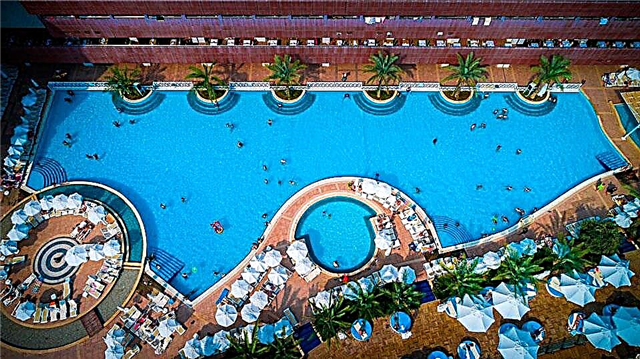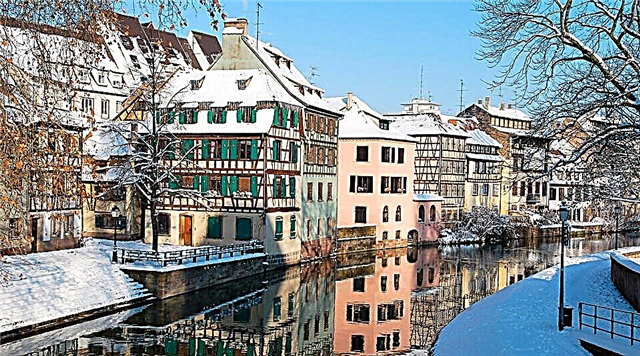Manezhnaya Square in Moscow is one of the largest in the capital. It is located in the city center, surrounded by streets: Herzen - from the west, Mokhovaya - from the north, Tverskaya - from the east, and its southern part is bordered by Aleksandrovsky Garden and Red Square.
History

Since the 12th century, there was dense development on the site of Manezhnaya Square, but in 1493 all the wooden buildings near the Kremlin were demolished due to the risk of fire. In the 16th century, under Ivan the Terrible, the Oprichny Dvor was located here, a little later, under Boris Godunov, a settlement of stirrup archers. In 1708, on the site of the settlement, a fleeting market was built with trading rows: Patchwork, Obzhorny, Kuznechny, Okhotny, Myasny and others. Nearby there were taverns and lodging houses of the lowest category.
At the intersection of Mokhovaya and Tverskaya streets in 1670, the Moiseevsky women's monastery was built, which burned down in 1737. He gave the name to Moiseevskaya Square, which would later become part of the Manezhnaya Square. During the fire of 1812, this corner of Moscow was completely burned down. In 1817, the building of the Exerzirgauz or Manege was built here to conduct combat training of soldiers. The territory surrounding the Manezh was divided into small lanes, which got their name from the former trading rows: Bolshoi and Maly Patchwork, Obzhorny, etc. They were built up with inns, eateries, inns, shops.
With the beginning of the construction of the metro in 1932-1938, the buildings in the lanes were demolished. The vacated space was named "Manezhnaya Square". In 1967 it was renamed in honor of the 50th anniversary of the October Revolution, and it became known as "Square of the 50th anniversary of October". Until the 90s of the last century, the square remained empty and served as a parking lot for numerous tourist buses. In 1993, it was ennobled, transformed according to the project of M. Posokhin and Z. Tseretelli, and returned the previous name. The aboveground part has become a cultural and walking area with fountains, monuments, sculptures, and the underground part has become a three-storey shopping center.
Origin of name
The current name "Manezhnaya" comes from the building of the Manege, one of the facades overlooking the square.
Buildings and landmarks of Manezhnaya Square

The Manege building is located on the south side of the square. The author of the project was the architect A. Betancourt. It was built in 1817 to commemorate the 5th anniversary of the victory in the Patriotic War of 1812, and was completed in record time - 8 months. The design of the facades in the Empire style was completed in 1825 by O. Bove. This unique structure, 166 m long and 45 m wide, was erected without internal columns and had free space. Nothing prevented the marching of the 2,000th regiment of soldiers and the entry of the equestrian officers.
Since 1831, the building has been used for organizing exhibitions, concerts, balls. Under Soviet rule, it housed a government garage for some time, and since 1967 the Manege has been renamed the Central Exhibition Hall, and exhibitions have been held there. In 2004, a fire broke out in the building, as a result of which only the walls remained. Subsequently, it was restored and partially altered. In addition to the Manezh, many other historical and architectural sights are concentrated around the square.
Chapel of the Iberian Icon of the Mother of God

Manezhnaya and Red Squares are separated by the main gates of Moscow - Voskresenskie with the Chapel of the Iveron Icon of the Mother of God. In the 17th century, a copy of the icon was brought from Athos and placed over the gate, making a small canopy. Later, a small stone chapel was erected for her, adjacent to the wall of the gate. The icon is very revered in Russia, it was considered miraculous for a long time, both tsars and nobles and ordinary people came to worship.
In 1929, the Bolsheviks plundered and destroyed first the chapel, and then the Resurrection Gate. Where the original list is now is not known for certain. In 1994 it was decided to restore the main gate with a chapel. A new copy of the icon was handed over to her from Athos. In 1995, the chapel was reopened.
Museum of Archeology of Moscow

Next to the chapel is the Museum of Moscow Archeology. During the reconstruction of Manezhnaya Square and the construction of an underground shopping complex, many interesting historical artifacts were discovered. This was the impetus for the creation of the Museum of Archeology in 1997. It is located at a depth of 7 meters and occupies a small room.
The main exhibit is a fragment of the 17th century white-stone Voskresensky Bridge across the Neglinka River, which flowed between Tverskaya Street and Red Square, and in the 19th century was enclosed in a pipe. In addition, silver coins and vessels, objects of religious rituals from the Moiseevsky Monastery, ancient weapons, dishes, jewelry, smoking pipes and much more are exhibited here.
Sculptures by Zurab Tsereteli

The decoration of Manezhnaya Square is a variety of sculptures created by Z. Tsereteli. These are favorite heroes of Russian fairy tales and fables, located along the river bed that imitates Neglinka: The Little Mermaid, the Frog Princess and Ivan Tsarevich, the fox and the crane, the old man and the fish, the firebird, Alyonushka, the wolf and the bear, etc. seen on the main dome of the shopping center. There is an equestrian sculpture of St. George killing a dragon with a spear. And in the bowl of the "Geyser" fountain there are magnificent four bronze horses called "The Seasons".
Historical Museum and Monument to Georgy Zhukov

The State Historical Museum opened in 1875. This is the largest museum in Russia, with about five million exhibits. It presents the history of all of Russia from stone to the end of the 19th century. Here are exhibited tools and items found at ancient sites, burial grounds, decorative and applied arts, utensils, clothes of tsars, icons, early printed books, weapons, etc. In addition to the permanent exhibition, thematic exhibitions are regularly held.
In 1995, a monument to Marshal G. Zhukov by sculptor V.M. Klykov was erected behind the Historical Museum. It is made of bronze and depicts a commander on horseback, trampling on German standards with his hooves. The monument was erected in honor of the celebration of the half-century victory in the war of 1941-1945.
Underground shopping center "Okhotny Ryad"

The Okhotny Ryad shopping center, opened for the 850th anniversary of Moscow in 1997, is located under Manezhnaya Square and occupies three underground floors. There are more than 100 shops, bank branches, a bowling alley, a food court, travel companies. The total area with underground parking is about 63 thousand square meters
The shopping complex is crowned with the composition "World Clock", which is a glass dome surrounded by fountains, with a sculpture of St. George at the top. From the outside, it looks like the northern hemisphere. From the inside - it looks like a dial, divided into 24 sectors (time zones), showing the time of different cities on the planet. The dome moves slowly, making a full revolution per day.
Fountains and sculptural group "Seasons"

There are twelve fountains on the territory of Manezhnaya Square. They begin their work on April 30, operate around the clock, and the season ends when the temperature reaches 0 ° С. The main fountain is considered to be the Geyser, since the opening of the season of fountains with a theatrical performance and a performance by the mayor began with it in Moscow until 2004. It got its name from the jets shooting vertically upwards, reminiscent of a geyser.
Inside the fountain there are four galloping horses - "The Seasons". Each horse symbolizes the season of the year, and all together - the fast flying time. Behind them is the Veil fountain, the jets of which rise as a water arch above the footpath.In the bed of the Neglinka River, there are two fountains: "Snail" with spiral jets and "Grotto", in which small fountains surround the Little Mermaid lying on a stone. With the onset of darkness, the fountains are effectively illuminated, making Manezhnaya Square extraordinarily beautiful.
Sign "Zero Kilometer of Russian Highways"

Located at the Resurrection Gate. It is made of metal in the form of a half-meter octagon and is built into the pavement. The sign was installed in 1996 and symbolizes the beginning of the countdown of kilometers of Russian highways. According to the existing belief, if you stand on the sign with your back to the Resurrection Gate and throw a coin, then all your wishes will come true.
Mass events in the square

Political rallies and demonstrations were often held at Manezhnaya. Opponents of the GKChP gathered here in August 1991, Spartak fans in 2002 and 2010, and A. Navalny's supporters in 2014. National and city holidays are celebrated on the square: City Day, Maslenitsa, Christmas, Easter, etc. On New Year's, a huge Christmas tree is installed, a fair and theatrical performances are held. Artists and musicians have performed here many times, a rally-concert dedicated to the 4th anniversary of the annexation of Crimea to Russia with a live broadcast was held.
Where is it and how to get there

The square is located in the center of Moscow next to the Kremlin. The Okhotny Ryad metro station overlooks it. In five minutes (350 m) walk there are stations: "Teatralnaya", "Ploschad Revolyutsii".












